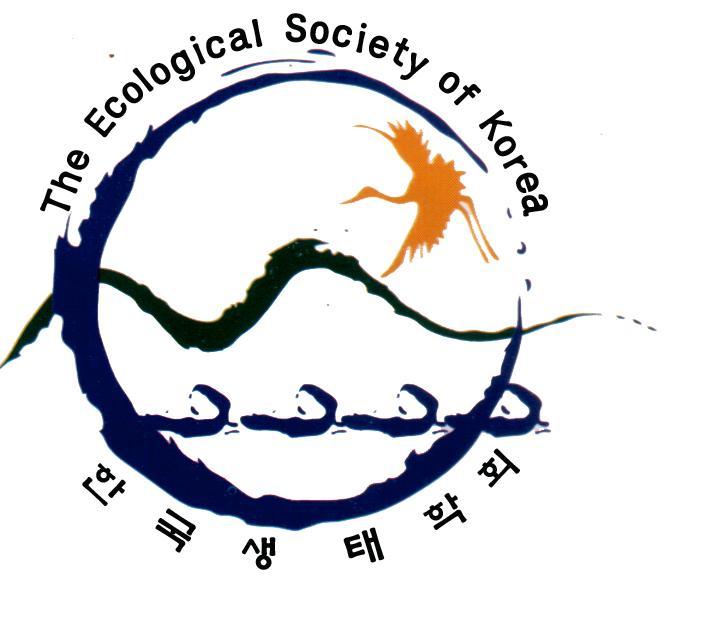- ENGLISH
- P-ISSN2287-8327
- E-ISSN2288-1220
- SCOPUS, KCI
 ISSN : 2287-8327
ISSN : 2287-8327
Behavioral characteristics of phosphorus in sediments according to the forms of phosphorus
Tae-hoon Kim (Department of Environmental Application Science, K)
Jongjun Lee (Department of Environmental Application)
김정수 (경희대학교)
Abstract
This study investigates the behavioral characteristics and forms of phosphorus in the sediment according to the oxygen condition (aerobic/anaerobic). In the behavioral characteristics analysis, Al-P and Fe-P concentrations were the highest among the forms of inorganic phosphorus, and therefore had the strongest impact on sorption and release correspond¬ing to environmental condition changes. In the experimental investigation of the inorganic forms of phosphorus in the sediment according to the oxygen condition, we determined that the forms of inorganic phosphorus did not greatly affect the sorption or release reaction because the distribution ratios of the inorganic forms remained constant corresponding to changes of dissolved oxygen (DO) conditions. In contrast, the forms of organic phosphorus in the sediments affected both sorption and release. Furthermore, labile-P and moderately labile-P forms were the major mechanisms of sorption in sediment. Moderately labile-P was the greatest contributor to phosphorus release action in sediment. As environmen¬tal changes are important for the behavioral characteristics of phosphorus in sediment, the forms of phosphorus should be considered to have a greater effect, especially in the organic phosphorus case. Therefore, based on the present study results, sediment evaluation aimed at controlling internal pollutants in reservoirs should include an examination of the forms of phosphorus present, as well as the release characteristics of environmental changes, which are influential factors of phosphorus control. Further research in this field is required.
- keywords
- inorganic phosphorus, organic phosphorus, phosphorus forms, phosphorus release
참고문헌
Bores PCM. 1991. The influence of pH on phospate release from lake sediments. Water Res 25: 309-311.
Bostrom B. 1988. Relations between chemistry, microbial biomass and activity in sediments of a polluted vs. a non-polluted eutrophic lake. Verh Int Ver Theoret Angew. Limnol 23: 451- 459.
Chapra SC, Canale RP. 1991. Long-term phenomenological model of phosphorus and oxygen for stratified lakes. Water Res 25: 707-715.
Dorich RA, Nelson DW, Sommers LE. 1984. Availability of phosphorus to algae from eroded soil fractions. Agric Ecosyst Environ 11: 253-264.
Furumai H, Ohgaki S. 1989. Absorption-desorption of phosphorus by lake sediments under anaerobic conditions. Water Res 23: 677-683.
Gee GW, Bauder JW. 1986. Particle-size analysis. In: Klute, A. (Ed.), Methods of soil analysis: Part 1. Physical and mineralogical methods, 2nd ed., Agronomy, 9. Soil Science Society of America, Madison, WI, pp 383-411.
Hakanson L, Jansson M. 1983. Principles of lake sedimentology. Springer-Verlag, Berlin.
Holdren GC, Armstrong DE. 1980. Factors affecting phosphorus release from intact lake sediment cores. Environ Sci Technol 14: 79-87.
Ishio S, Kuwahara M, Nakagawa H. 1986. Conversion of Al-PO4-P to Fe-bound P in sea sediments. Bull Jpn Soc Sci Fish 52: 901-911.
Jackson ML. 1958. Soil chemical analysis. Prentice-Hall Inc, Englewood Cliffs, NJ.
Kaiserli A, Voutsa D, Samara C. 2002. Phosphorus fractionation in lake sediments – Lakes Volvi and Koronia. N. Greece. Chemosphere 46: 1147-1155.
Kang H, Jang JH. 2015. Water quality modeling for the water quality conservation of estuary reservoir in Korea. Desalin Water Treat 53: 1840-1854.
Kim EH, Kim HS. 2002. A study on release characteristics and forms of phosphorus in seduments. Korean J Sanit 17: 75-80.
Kovar JL, Pierzynski GM. 2009. Methods of phosphorus analysis for soils, sediments, residuals, and waters second edition. South Coop Ser Bull 408: 50-60.
Kozerski HP, Kleeberg A. 1998. The sediments and the benthic-pelagic exchange in the shallow lake Muggelsee (Berlin, Germany). Int Rev Hydrobiol 83: 77-112.
KS I ISO 11261. 2008. Soil Quality-Determination of total nitrogen - modified kjeldahl method. Korean industrial standard.
Lee CW, Kwon YT, Park DK, Kim BJ. 1995. Phosphorus fraction and metals speciation in the sediments of southern coastal area of Korea. J Korean Soc Environ Eng 17: 661-674.
MERK. 2002. Standard method of analysis for Soil. Ministry of Environment, Republic of Korea. Revised in 2002.
Mortimer CH. 1971. Chemical exchanges between sediments and water in the Great Lakes-speculations on probable regulatory mechanisms. Limnol Oceanogr 16: 387-404.
Oh JM, Cho YC. 2007. Effects of Nutrients Release from Sediments on Water Quality in a Small-size Reservoir. J Korean Soc Environ Eng 29: 1217-1222.
Zhang R, Wu F, Liu C, Fu P, Li W, Wang L, Liao H, Guo J. 2008. Characteristics of organic phosphorus fractions in different trophic sediments of lakes from the middle and lower reaches of Yangtze River region and Southwestern Plateau, China. Environ Pollut 152: 366-372.
Zhou Q, Gibson CE, Zhu Y. 2001. Evaluation of phosphorus bioavailability in sediments of three contrasting lakes in China and the UK. Chemosphere 42: 221-225.
- 56다운로드 수
- 217조회수
- 0KCI 피인용수
- 0WOS 피인용수

